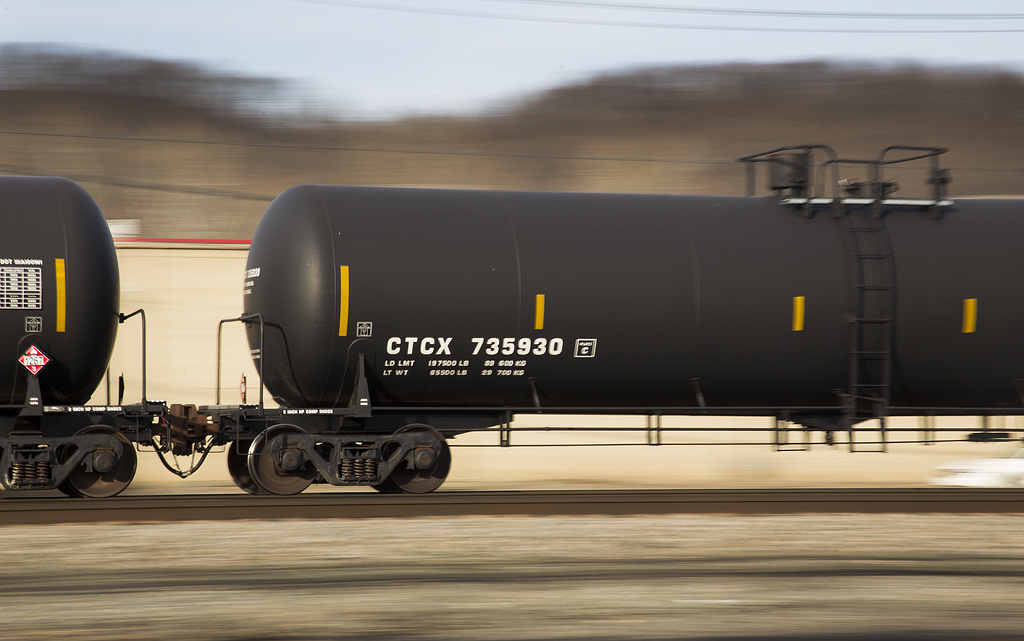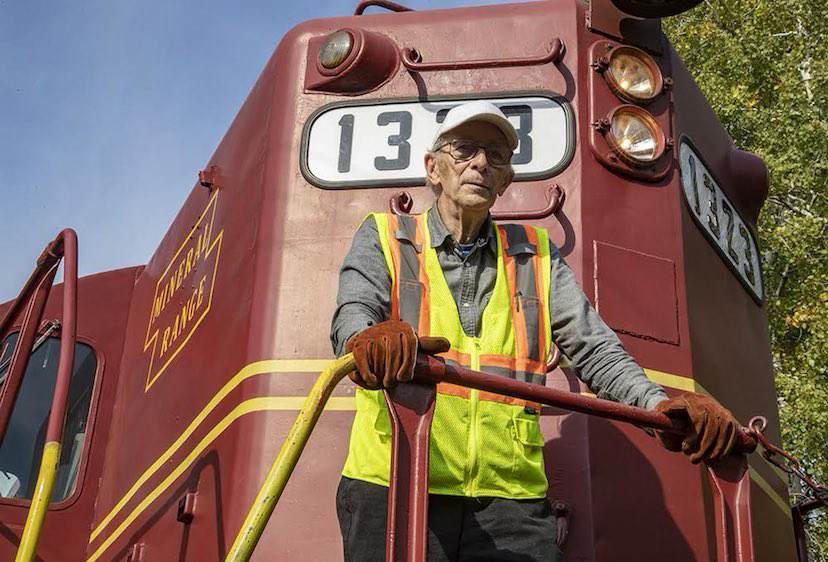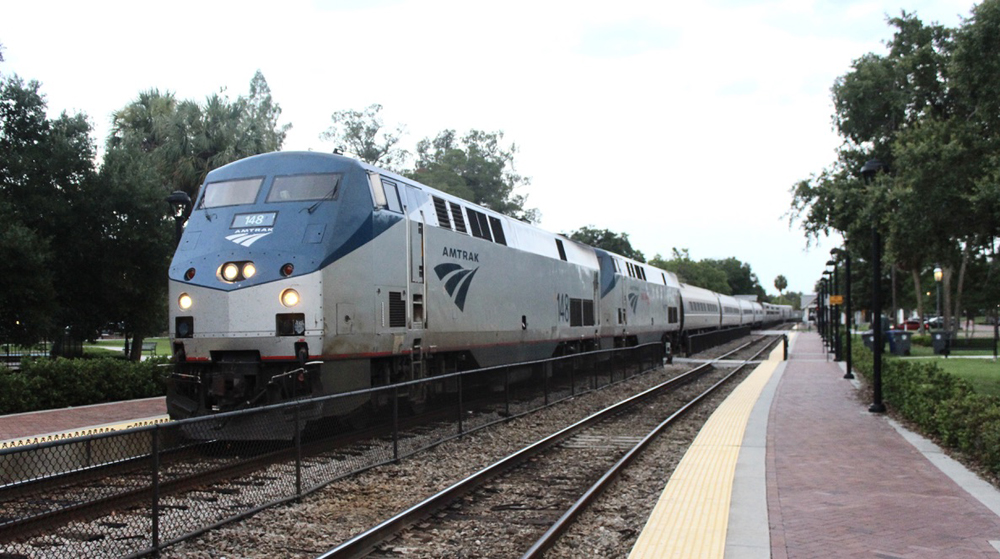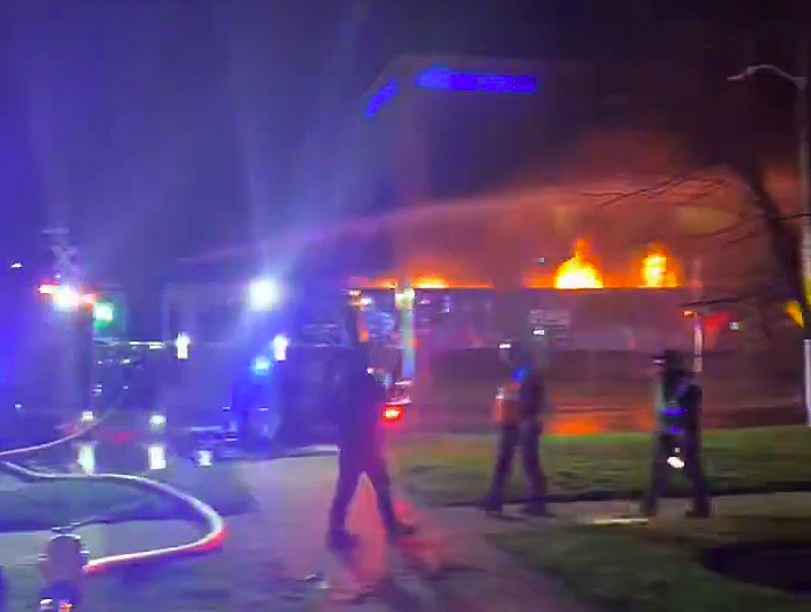“The committee is unable to make a conclusive statement concerning the emergency performance of ECP brakes relative to other braking systems,” wrote Louis J. Lanzerotti, committee chair.
The report will inform government and industry adversaries in a years-long struggle over the mandatory use of ECP brakes, but it’s not likely to end the debate. Derailments involving tank car trains hauling crude oil and other flammable materials have become a political as well as safety issue, with several local governments attempting to ban tank car trains in their jurisdictions.
In May 2015, the Federal Railroad Administration published a rule requiring ECP brakes on tank car trains. The railroad industry challenged the rule, and in December 2015, in a section of the Fixing America’s Surface Transportation Act, Congress ordered the Government Accountability Office to examine the FRA results.
The FRA supported the ECP brake rule with data from a computer model that showed the brakes could reduce the effects of derailments and tank punctures by 20 percent. The Association of American Railroads and the Railway Supply Institute used a different model to show that the safety benefits of the high-tech brakes was “marginal,” according to the Government Accountability Office. The government watchdog turned the problem over to the Transportation Research Board in October 2016.
The TRB committee looked at the FRA model, and ordered field tests to gather additional data. In the model, a theoretical train traveling at 40 miles per hour derails on a curve. Cars directly behind the motive power go off the tracks. All of the cars are the newest, most sturdy tank cars specified by the Department of Transportation, the DOT-117.
The FRA ran its simulations with the additional data and found that in a train equipped with conventional air brakes, an average of 25.5 cars would likely go off the tracks; six of them would puncture. The same train equipped with ECP brakes, 21 cars would derail; 4.7 would puncture.
The committee report concludes that FRA’s efforts to validate its simulation “do not instill sufficient confidence” that the electronic brakes performed better than conventional systems in emergency braking situations. However, the committee’s work orders did not include making recommendations to policy-makers.















After retiring from a 30-year career in the Fire Service, virtually ANYTHING “simulated” will be flawed. It doesn’t matter how good the computer is, or the software. Like a live fire, a moving train on rails will always find a way outside of computer simulation.
Historically, the railroad industry has always fought against technology and progress due to cost. It started before link-and-pin couplers, pre-Westinghouse air brakes, etc. I’m not surprised that this institute that did the study reached the decision they have.
Peter Clark has many valid points, that ECP brakes do not stop derailments, but will safely stop a train in a more expedient manner. The math alone proves this. Compressed air travels at approximately 100 feet-per-second, so there is a delay in brake application on rolling stock distant from the controlling locomotive. Electricity is instantaneous.
Thanks for the solid info Peter Clark.
I’d add less intermediate dwell time and better terminal throughout from the elimination of pumping air and air tests.
Not sure about how cabling disconnect/reconnect when switching cars or blocks in or out would affect MBTF. Or troubleshooting when cabling/connector failures occur (which is the weak link in any electrical system). That and the ROI on the capital investment per car might make it less economically compelling outside of unit train and maybe intermodal service.
Wireless communication with FRED helps the connectivity issue.
Question #1: Will Wall street allow a railroad to make a long term investment? Perhaps BNSF? The Australian cars were added as complete fleets of unit trains. It’s coming eventually.
Yes, I would expect the connections to be wireless in the future. and to be carrying a lot more info form each car.bearing temp for e.g , maybe even cameras on the rear, or mid train.
ECP brakes are not intended to reduce damage to tank cars in a derailment. They are intended to increase the efficiency of train braking in general. They may be able to prevent derailments in long trains by reducing compression forces in very long trains by greatly speeding up brake applications and reducing wheel damage caused by delayed release in the rear cars of long trains. Many operators of very large coal trains in Australia have adopted ECP brakes simply as a commercial decision, because it saves them money on freight car maintenance and allows slightly higher speed operation that reduces turn around time, improving return on investment in cars. I’ve seen an empty 80 car train running at 50 mph stop in its own length with no bunching of slack and no slipping of wheels when a signal failed ahead of it. (The signal was showing red, amber and green at one second intervals due to a failed contact). The train moved off with no flat wheels. I challenge anybody to try that with Westinghouse brakes in emergency….
Vehicles derailing immediately behind the locomotives is, admittedly, the worst case for Westinghouse, since the advantage of ECP would be in the more rapid application of brakes on the trailing vehicles. I’d like to see a real test, not a computer model, carried out on this scenario, and see if the air brakes can really apply as fast as the model indicated. How much extra delay is needed to double the number of penetrated tank cars?
But in reality, ECP brakes can prevent derailments caused by train action on long trains in dips like small river crossings and the like.
ECP brakes are cheaper in the long run. American Railroads see ECP brakes as a complication rather than a solution, but they won’t be able to cling to a nineteenth century brake system forever, just because it is the present standard. The steam hauled Southern Pacific Daylight trains of the late 1930s had electro-pneumatic brakes which operate on the same principle as ECP brakes. Nobody can say that the system doesn’t work.
In Australia, one operator (Aurizon) entered the Hunter valley coal haul with ECP brakes and after watching them for a short while, Pacific National (PN) followed. The market was expanding and all new vehicles and locomotives came with ECP brakes. PN still have a mixed fleet but most locomotives can now control ECP trains and most trains run with ECP brakes. Some vehicles ran with a two pipe Westinghouse system while carrying isolated ECP valves in the early days of the changeover, and blocks were converted to ECP as convenient for operation.
PN even extended ECP operation to a new aggregate traffic hundreds of miles from the Hunter Valley and are running three trains of 33 100 tonne capacity hoppers with distributed power controlled through the ECP cable. This avoided having to provide the extra track and switches at the load and unload points and gives rapid turnaround. In fact, traffic built up and a fourth conventional train was added and there is a lot of shuffling of locomotives on this train at each reversal.
But conditions in Australia aren’t very different to the USA. The couplers, brakes, wheels and trucks are identical. The train crews are unionised. The operators have to pay dividends to their shareholders.
But they bought ECP brakes because they thought it would save them money and they’ve kept doing it, so it must be worth while. ECP is confined to unit trains, and intermodal trains have conventional brakes but nobody seems to worry about that.
Government should have gave the railroads an option PTC or ECP? Bet the railroads would have chose ECP.
Well it looks like the simulation results roughly confirm the original 20% reduction calculation. But the committee didn’t think it was enough. Could a link to the report be provided.